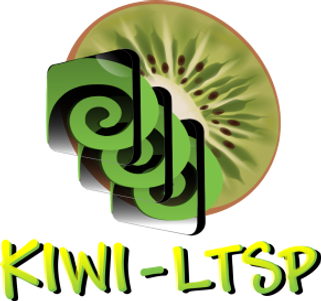Portal:KIWI-LTSP

|
Cette page n'est pas encore traduite (ou pas complètement) Cet article a besoin d'être traduit. Merci de participer au travail si vous en avez le temps et la compétence. |
Welcome to the KIWI-LTSP Portal edit
Bienvenue sur le portail KIWI-LTSP (LTSP 5) sur openSUSE. Vous trouverez ici toutes les informations nécessaires pour commencer.
What is KIWI-LTSP? edit
KIWI-LTSP utilizes ease of deployment and management provided by KIWI to bring our awesome distribution openSUSE to everyone that wishes to use thin client computing.
What is LTSP
The Linux Terminal Server Project (LTSP) adds thin-client support to Linux servers. LTSP is a flexible, cost effective solution that is empowering schools, businesses, and organizations all over the world to easily install and deploy desktop workstations. A growing number of Linux distributions include LTSP out-of-the-box.
Shiny new thin-clients and legacy PCs alike can be used to browse the Web, send e-mail, create documents, and run other desktop applications. LTSP not only improves Total Cost of Ownership (TCO), but more importantly, provides increased value over traditional computing solutions. LTSP workstations can run applications from Linux and Windows servers.
Visit LTSP home page for more information.
What is KIWI
The openSuSE KIWI Image System (KIWI) provides a complete operating system image solution for Linux supported hardware platforms as well as for virtualisation systems like Xen Qemu or VMware. KIWI features distribution independent design, support for virtual systems, network deployed images, live CDs, thick clients and now with kiwi-ltsp diskless clients too.
Visit KIWI home page for more information.
Featured article edit
What "extra" does KIWI bring to LTSP?
- We use KIWI imaging technology to create boot as well as client images.
- We can use "prebuilt" images as KIWI's netboot image provides feature of serving config files through tftp server.
- Idea of using "prebuilt" images is that users do not have to build their own images, so the DVD media to build chroot image is not required.
- As KIWI provides facility to create different kind of images, we can create Live CD or USB stick image for the LTSP clients, these images work on LTSP5 server running on other distributions too.
- Some LTSP implementations require manual configuration of services, kiwi-ltsp-setup script provides all the tools necessary to build images and configure services.
- KIWI-LTSP provides easy way to create diskless distributed build farm using Icecream
- Apart from NFS and NBD root, KIWI-LTSP supports ATA over Ethernet also.
- With ATA over Ethernet it is possible to serve multiple images of different kinds from single server, including network booting Fat client images.
Getting started edit
Guides
Watch the Video howto on Youtube and read the quick start guide to kiwi-ltsp. Also have a look on the configuration guide and the tips and tricks page. Running into problems? Don't panic! Read the Troubleshooting information here.
Get KIWI-LTSP
The following installation sources require a good Internet connection. Packages download sizes are 150 to 180M. Please check the system requirements
or via commandline(following commands to be run in terminal as root "su -"):
zypper ar -r http://r.opensu.se/server:ltsp.repo zypper in kiwi-ltsp-prebuilt
It is expected that minimum GNOME environment is installed on the server.
Try KIWI-LTSP Live server DVD
Download it from here
Things to do edit
Easy-LTSP Screenshots edit
Articles liés :
Pages de support :
Pages projet :
Pages archive :
External Links edit
Related Projects edit
Contact us edit
Please use one of the mailing lists from here or IRC Freenode #kiwi-ltsp channel.
Attention Developers
If you are a developer and would like to contribute to this project, please visit Sourceforge development page.

